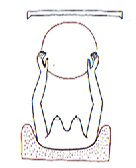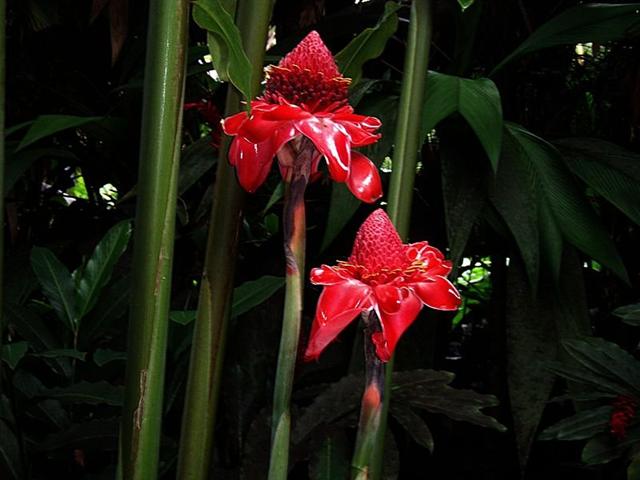3 * 136 = 408. I think this formula encapsulates the idea of birth, and glyph 408 is a Rogo type of glyph:
... From One comes Two, and from Two comes Three. From Three everything else will then be generated. (An old Chinese truth.) ...
Beyond mago in Ga2-14 - where we can see an internal straight line leading up to an apex (in the middle) with nothing following - there was a birth (hanau). But this was illustrated at the opposite side of the sky, to be read nakshatra wise in Ga8-24 (where 8 * 24 = 192 = 384 / 2).
... When it was evident that the years lay ready to burst into life, everyone took hold of them, so that once more would start forth - once again - another (period of) fifty-two years. Then (the two cycles) might proceed to reach one hundred and four years. It was called 'One Age' when twice they had made the round, when twice the times of binding the years had come together. Behold what was done when the years were bound - when was reached the time when they were to draw the new fire, when now its count was accomplished. First they put out fires everywhere in the country round. And the statues, hewn in either wood or stone, kept in each man's home and regarded as gods, were all cast into the water. Also (were) these (cast away) - the pestles and the (three) hearth stones (upon which the cooking pots rested); and everywhere there was much sweeping - there was sweeping very clear. Rubbish was thrown out; none lay in any of the houses ...
... in the ceremonial course of the coming year, the king is symbolically transposed toward the Lono pole of Hawaiian divinity ... It need only be noticed that the renewal of kingship at the climax of the Makahiki coincides with the rebirth of nature. For in the ideal ritual calendar, the kali'i battle follows the autumnal appearance of the Pleiades, by thirty-three days - thus precisely, in the late eighteenth century, 21 December, the winter solstice. The king returns to power with the sun. Whereas, over the next two days, Lono plays the part of the sacrifice. The Makahiki effigy is dismantled and hidden away in a rite watched over by the king's 'living god', Kahoali'i or 'The-Companion-of-the-King', the one who is also known as 'Death-is-Near' (Koke-na-make). Close kinsman of the king as his ceremonial double, Kahoali'i swallows the eye of the victim in ceremonies of human sacrifice ... The 'living god', moreover, passes the night prior to the dismemberment of Lono in a temporary house called 'the net house of Kahoali'i', set up before the temple structure where the image sleeps. In the myth pertinent to these rites, the trickster hero - whose father has the same name (Kuuka'ohi'alaki) as the Kuu-image of the temple - uses a certain 'net of Maoloha' to encircle a house, entrapping the goddess Haumea; whereas, Haumea (or Papa) is also a version of La'ila'i, the archetypal fertile woman, and the net used to entangle her had belonged to one Makali'i, 'Pleiades'. Just so, the succeeding Makahiki ceremony, following upon the putting away of the god, is called 'the net of Maoloha', and represents the gains in fertility accruing to the people from the victory over Lono. A large, loose-mesh net, filled with all kinds of food, is shaken at a priest's command. Fallen to earth, and to man's lot, the food is the augury of the coming year. The fertility of nature thus taken by humanity, a tribute-canoe of offerings to Lono is set adrift for Kahiki, homeland of the gods. The New Year draws to a close. At the next full moon, a man (a tabu transgressor) will be caught by Kahoali'i and sacrificed. Soon after the houses and standing images of the temple will be rebuilt: consecrated - with more human sacrifices - to the rites of Kuu and the projects of the king ...
... Indeed, at the rituals of the installation, the chief is invested with the 'rule' or 'authority' (lewaa) over the land, but the land itself is not conveyed to him. The soil (qele) is specifically identified with the indigenous 'owners' (i taukei), a bond that cannot be abrogated. Hence the widespread assertion that traditionally (or before the Lands Commission) the chiefly clan was landless, except for what it had received in provisional title from the native owners, i.e., as marriage portion from the original people or by bequest as their sister's son ... The ruling chief has no corner on the means of production. Accordingly, he cannot compel his native subjects to servile tasks, such as providing or cooking his daily food, which are obligations rather of his own household, his own line, or of conquered people (nona tamata ga, qali kaisi sara). Yet even more dramatic conditions are imposed on the sovereignity at the time of the ruler's accession. Hocart observes that the Fijian chief is ritually reborn on this occasion; that is, as a domestic god. If so, someone must have killed him as a dangerous outsider. He is indeed killed by the indigenous people at the very moment of his consecration, by the offering of kava that conveys the land to his authority (lewaa). Grown from the leprous body of a sacrificed child of the native people, the kava the chief drinks poisons him ... Sacred product of the people's agriculture, the installation kava is brought forth in Lau by a representative of the native owners (mataqali Taqalevu), who proceeds to separate the main root in no ordinary way but by the violent thrusts of a sharp implement (probably, in the old time, a spear). Thus killed, the root (child of the land) is then passed to young men (warriors) of royal descent who, under the direction of a priest of the land, prepare and serve the ruler's cup ... the tuu yaqona or cupbearer on this occasion should be a vasu i taukei e loma ni koro, 'sister´s son of the native owners in the center of the village' ... Traditionally, remark, the kava root was chewed to make the infusion: The sacrificed child of the people is cannibalized by the young chiefs. The water of the kava, however, has a different symbolic provenance. The classic Cakaudrove kava chant, performed at the Lau installation rites, refers to it as sacred rain water from the heavens ... This male and chiefly water (semen) in the womb of a kava bowl whose feet are called 'breasts' (sucu), and from the front of which, tied to the upper part of an inverted triangle, a sacred cord stretches out toward the chief ... The cord is decorated with small white cowries, not only a sign of chieftainship but by name, buli leka, a continuation of the metaphor of birth - buli, 'to form', refers in Fijian procreation theory to the conceptual acception of the male in the body of the woman. The sacrificed child of the people will thus give birth to the chief. But only after the chief, ferocious outside cannibal who consumes the cannibalized victim, has himself been sacrificed by it. For when the ruler drinks the sacred offering, he is in the state of intoxication Fijians call 'dead from' (mateni) or 'dead from kava' (mate ni yaqona), to recover from which is explicitly 'to live' (bula). This accounts for the second cup the chief is alone accorded, the cup of fresh water. The god is immediately revived, brought again to life - in a transformed state ...
... In China, every year about the beginning of April, certain officials called Sz'hüen used of old to go about the country armed with wooden clappers. Their business was to summon the people and command them to put out every fire. This was the beginning of the season called Han-shih-tsieh, or 'eating of cold food'. For three days all household fires remained extinct as a preparation for the solemn renewal of the fire, which took place on the fifth or sixth day after the winter solstice [Sic!]. The ceremony was performed with great pomp by the same officials who procured the new fire from heaven by reflecting the sun's rays either from a metal mirror or from a crystal on dry moss. Fire thus obtained is called by the Chinese heavenly fire and its use is enjoined in sacrifices: whereas fire elicited by the friction of wood is termed by them earthly fire, and its use is prescribed for cooking and other domestic purposes ... Like archaic China and certain Amero-Indian societies, Europe, until quite recently, celebrated a rite involving the extinguishing and renewal of domestic fires, preceded by fasting and the use of the instruments of darkness. This series of events took place just before Easter, so that the 'darkness' which prevailed in the church during the service of the same name (Tenebrae), could symbolize both the extinguishing of domestic fires and the darkness which covered the earth at the moment of Christ's death. In all Catholic countries it was customary to extinguish the lights in the churches on Easter Eve and then make a new fire sometimes with flint or with the help of a burning-glass. Frazer brings together numerous instances which show that this fire was used to give every house new fire. He quotes a sixteenth-century Latin poem in a contemporary English translation, from which I take the following significant lines: On Easter Eve the fire all is quencht in every place, // And fresh againe from out the flint is fecht with solemne grace. Then Clappers cease, and belles are set againe at libertée, // And herewithall the hungrie times of fasting ended bée ...
...Al Maisān, the title of γ Geminorum, by some error of Firuzabadi was applied to this star as Meissa [λ Orionis}, and is now common for it. Al Sufi called it Al Tahāyī; but Al Ferghani and Al Tizini knew it as Rās al Jauzah, the Head of the Jauzah, which it marks. The original Arabic name, Al Hak'ah, a White Spot, was from the added faint light of the smaller φ¹and φ² in the background, and has descended to us as Heka and Hika. These three stars were another of the Athāfiyy [tripods used for cooking] of the Arabs; and everywhere in early astrology were thought, like all similar groups, to be of unfortunate influence in human affairs. They constituted the Euphratean lunar station Mas-tab-ba-tur-tur, the Little Twins, a title also found for γ and η Geminorum; and individually were important stars among the Babylonians, rising to them with the sun at the summer solstice, and, with α and γ, were known as Kakkab Sar, the Constellation of the King ...
|
|||||||||||||||||||||||||||||||||||||||||||||||||||||||||||||||||||||||||||||||||||||||||||||||||||||||||||||||||||||








.jpg)






